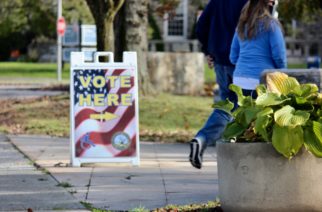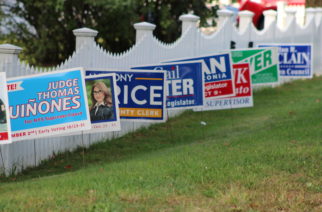
By Anne Reynolds and Bob Keefe
After spending much of the past six months in Albany, legislators from across the state are returning to their home districts for the summer and fall.
Since the legislative session began in January, how have their home districts changed? For one, there’s probably a few more clean energy jobs.
According to the “Clean Jobs New York” report by the national nonpartisan business group Environmental Entrepreneurs (E2), the Alliance for Clean Energy New York, and other partners in the New Yorkers for Clean Power campaign, there are more than 85,000 clean energy jobs statewide.
We now have the chance to add tens of thousands more good-paying jobs like these throughout New York and make the state a real national leader on clean energy.
The Public Service Commission sometime in the weeks ahead is expected to release a final Clean Energy Standard. This standard should ensure New York gets 50 percent of its electricity from clean, renewable energy sources like wind and solar by 2030.
Business people across the state support this 50-by-30 plan because we know smart policies like these create jobs and drive economic growth. We also know the plan is key to continue supporting those 85,000 New Yorkers and their families from every legislative district in the state who already earn their wages from solar, wind and energy efficiency companies. (To see how many clean energy jobs are in your district, visit www.e2.org/clean-jobs-ny.)
To put it in perspective, nearly as many New Yorkers work in clean energy as work in the building construction industry. Tens of thousands more people work in clean energy than currently work in investment banking in the state.
And as an ever-increasing number of legislators are learning on their trips back home, these jobs are growing at a steady clip. Based on responses from employers surveyed by BW Research Partners for “Clean Jobs New York,” clean energy jobs in the Empire State are projected to grow by more than 6 percent over this year – much higher than the overall state and national economic growth rates.
From Suffolk County on the eastern end of Long Island (8,500 jobs), to Erie County in the Buffalo area (3,400 jobs), to Clinton County along our border with Quebec (300 jobs), there are clean energy jobs in every single county in New York.
In metropolitan New York City alone, there are more than 57,000 clean energy jobs.
The vast majority of all these clean energy jobs – four out of five – are in energy efficiency. Energy efficiency workers do things like retrofit commercial and residential buildings to help lower energy bills, manufacture ENERGY STAR appliances like ovens and refrigerators, and develop advanced, energy-saving materials.
While New York’s energy efficiency industry is strong, it could be even stronger. The American Council for an Energy-Efficient Economy (ACEEE) in 2013 ranked New York third nationwide for leadership in energy efficiency. But by 2014, New York dropped to seventh. Last year, it fell to ninth.
By establishing clear, robust statewide energy efficiency targets, New York can regain its Top 5 standing – and reap the cost savings, increased job growth, and other benefits that come with a more energy-efficient economy.
Renewable energy is another big job creator, with fast-growing industries like solar, wind, and geothermal employing more than 12,400 New Yorkers.
Solar alone makes up the vast majority of these renewable energy jobs, and this is no accident: NY-Sun, a $1 billion initiative launched by Gov. Andrew Cuomo in 2012, aims to add more than 3 gigawatts of installed solar capacity in the state by 2023.
To maintain this competitive edge in solar and other renewable technologies, Gov. Cuomo and NYSERDA must continue their leadership by implementing the portion of the Clean Energy Standard that sets up the 50-by-30 renewables requirement, and by designing a Clean Energy Standard that attracts the most wind and solar developers by providing the opportunity for long-term power purchase agreements between utilities and developers. New York should also further strength the post-2020 emission reduction targets of the visionary Regional Greenhouse Gas Initiative (RGGI).
As “Clean Jobs New York” shows – and as an increasing number of lawmakers and their constituents know – clean energy is a growing force in our state’s economy. With 85,000 clean energy workers in New York, we have 85,000 reasons to ensure our state’s clean energy sector is as strong as possible.
Anne Reynolds is the executive director of the Alliance for Clean Energy New York.
Bob Keefe is executive director of the national nonpartisan business group Environmental Entrepreneurs (E2).









